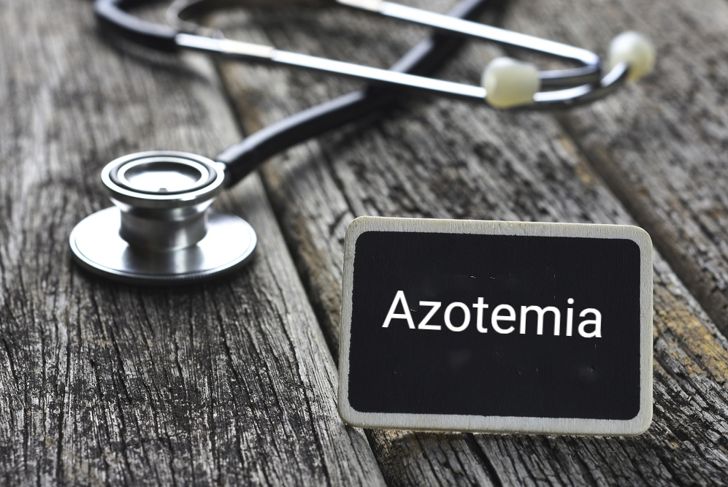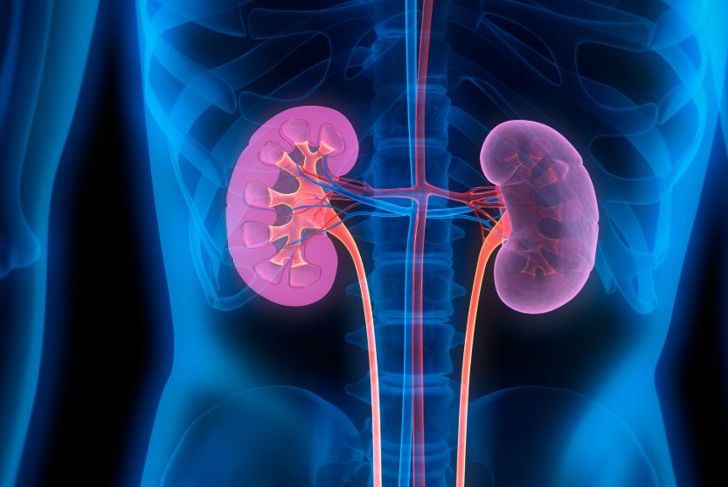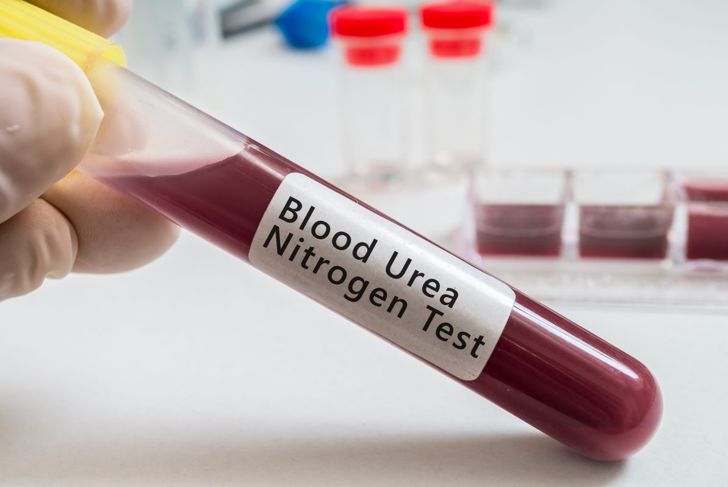When the kidneys cannot sufficiently rid the body of nitrogen waste, a condition called azotemia can develop. Nitrogen is an essential chemical that helps the body make amino acids, the building blocks of protein, and nucleic acids, components of DNA and RNA. In a healthy system, the chemical does its work, and then the kidneys remove it. When too much nitrogen remains in the body, the effects are life-threatening.
Prerenal Azotemia
If the kidneys receive too little blood, they cannot filter blood properly, leading to serum waste accumulation. Prerenal azotemia occurs when blood flow is slowed. This issue causes a malfunction of kidney filtration processes and leads to excessive levels of serum nitrogen. One common cause of prerenal azotemia is dehydration, which thickens the blood and strains the kidneys. It can also occur with excessive blood loss, shock, or congestive heart failure.
Intrinsic Azotemia
Intrinsic azotemia affects kidney structure and prevents them from working properly. The deformity could be in the small blood vessels around the organ — the glomeruli — the tubules, or another part. Inflammation, some medications, and infection can also cause this type of azotemia.
Postrenal Azotemia
Postrenal azotemia relates to the process after kidney filtration, describing a problem in the ureters or bladder. An obstruction or infection may block urine flow, or the issue may be due to a congenital abnormality. One prominent example of postrenal azotemia is kidney stones, which can affect both ureters, causing urine to back up into the kidneys. Men can develop postrenal azotemia when they have an enlarged prostate that blocks urine flow.
Heart Failure
During heart failure, blood backs up in the vessels that connect the heart and kidneys. Without a steady flow of oxygenated blood, the kidneys’ filtration system stagnates, increasing blood pressure and the amount of nitrogen in the blood. Prerenal azotemia is associated with cardiac failure.
Diabetes
Statistics show that close to 30 percent of people with type 1 diabetes and up to 40 percent with type 2 are at serious risk of prerenal azotemia. The disease damages the blood vessels, and when vessels in the kidneys fail, the organs cannot properly clean the blood. There is also an increased risk of postrenal azotemia because nerve damage can lead to an inability to empty the bladder.
Medications
Some individuals with hypertension take ACE inhibitors to keep the disease under control. However, this class of drugs puts individuals at risk for azotemia by lowering kidney blood volume. Non-steroidal anti-inflammatory medications can cause the condition as well; they can decrease blood flow to the kidneys, impairing the organ’s ability to remove water from the body,
Symptoms
Rising levels of nitrogen waste in the body not only lead to decreased urination but also result in fatigue, loss of appetite, muscle weakness, nausea, and swollen ankles due to fluid retention. If azotemia is caused by infection, there may be fever, chills, and night sweats.
Diagnosis
Doctors request at least four basic tests when diagnosing azotemia. The blood urea nitrogen test, BUN, determines the ratio of nitrogen — which creates the by-products ammonia and urea — to creatinine, which comes from muscles. These results can highlight underlying conditions or kidney dysfunction. Doctors will also test for debris in the blood, which may indicate cellular damage.
Treatments
Treating postrenal azotemia includes removing the obstruction in the vessel and initiating rehydration. Intrinsic azotemia is a complex manifestation without a clearly defined treatment but will depend on the underlying cause. Doctors may recommend lifestyle changes and hydration. Prerenal azotemia may require intravenous fluids to increase blood volume and improve kidney functionality.
Acute Tubular Necrosis
One significant complication from untreated azotemia is acute renal tubular necrosis, which comes in three forms: ischemic-, nephrotoxic- and sepsis-induced. The kidney’s tubular cells are damaged and die. Because acute tubular necrosis results in an increased risk of infection, it has a high mortality rate.

 Home
Home Health
Health Diet & Nutrition
Diet & Nutrition Living Well
Living Well More
More




















